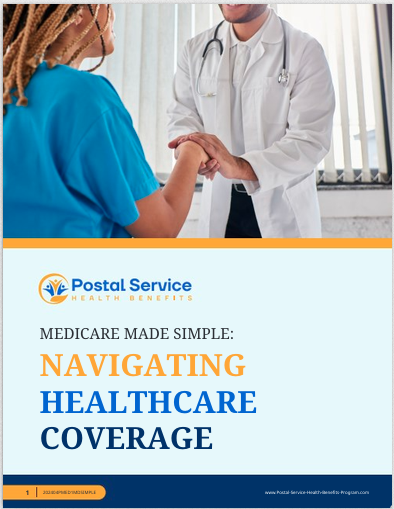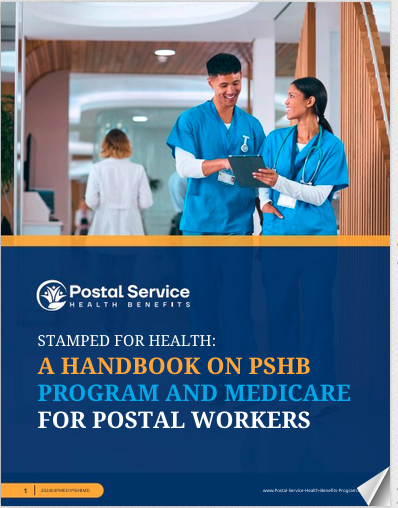Key Takeaways
-
Medicare Part C, also known as Medicare Advantage, offers a comprehensive approach to your healthcare needs by bundling services, including hospital, medical, and often prescription drug coverage.
-
Understanding how Medicare Part C interacts with Postal Service Health Benefits (PSHB) is essential for making the best healthcare decisions for you and your family.
Why Medicare Part C Stands Out
If you’re exploring healthcare options, Medicare Part C can be a compelling choice. Also called Medicare Advantage, this plan provides an all-in-one alternative to Original Medicare by combining hospital insurance (Part A), medical insurance (Part B), and often prescription drug coverage (Part D). For Postal Service employees and retirees, knowing how Medicare Part C integrates with PSHB can make a world of difference in optimizing your benefits.
What Makes Medicare Advantage Unique?
Medicare Part C is offered through private insurers approved by Medicare, delivering a unique blend of coverage that often includes:
-
Comprehensive Care: Beyond hospital and medical insurance, many plans include dental, vision, and hearing coverage.
-
Convenient Bundling: Combining Part A, Part B, and often Part D simplifies healthcare management.
-
Cost Predictability: These plans typically feature set copayments, coinsurance, and out-of-pocket limits, making expenses more predictable.
For PSHB participants, understanding these aspects helps ensure your healthcare plan complements your existing coverage.
How PSHB and Medicare Work Together
If you’re enrolled in the PSHB program, your coverage is already tailored to meet the needs of postal workers and their families. However, combining PSHB with Medicare, especially Medicare Advantage, can bring added benefits:
-
Coordination of Benefits: Medicare often becomes the primary payer, with PSHB covering secondary costs.
-
Enhanced Coverage: By enrolling in Medicare Advantage, you may gain additional services that PSHB alone doesn’t provide.
-
Cost Sharing: Medicare can reduce out-of-pocket expenses for services covered under both plans.
Eligibility and Enrollment in Medicare Part C
To enroll in Medicare Advantage, you must first be enrolled in Original Medicare (Parts A and B). Here are the key details:
-
Initial Enrollment Period: You have a 7-month window starting three months before your 65th birthday to sign up.
-
Annual Open Enrollment: From October 15 to December 7 each year, you can join, switch, or drop a Medicare Advantage plan.
-
Special Enrollment Periods: Certain life events, like moving or losing other health coverage, allow for enrollment outside the standard periods.
For PSHB enrollees, coordinating enrollment timelines ensures seamless coverage.
Key Considerations When Choosing Medicare Advantage
When exploring Medicare Advantage plans, evaluate these critical factors:
-
Network Restrictions: Many plans require using a network of doctors and hospitals for the best rates.
-
Prescription Drug Coverage: Check if your medications are included in the plan’s formulary.
-
Out-of-Pocket Costs: Review the plan’s deductible, copayments, and annual maximum out-of-pocket limit.
-
Additional Benefits: Consider extras like fitness memberships, telehealth services, and wellness programs.
How Medicare Part C Saves You Money
One of the standout features of Medicare Advantage is its cap on annual out-of-pocket expenses. For 2025, this limit is $9,350 for in-network services and $14,000 for combined in-network and out-of-network services. This protection ensures you won’t face unlimited costs for covered medical care.
For PSHB enrollees, this cap can significantly reduce financial strain, especially if you require frequent medical services or expensive treatments.
PSHB Integration with Medicare Advantage
Combining Medicare Advantage with PSHB involves coordination to maximize your benefits. Here’s how it works:
-
Primary and Secondary Payers: Medicare typically pays first, and PSHB covers additional costs.
-
Prescription Drug Plans: Some PSHB plans automatically include prescription drug coverage that aligns with Medicare Part D.
-
Cost Sharing and Premiums: You’ll need to manage both your Medicare and PSHB premiums, but the combined coverage often outweighs the additional costs.
Steps to Take for a Smooth Transition
If you’re considering adding Medicare Part C to your PSHB coverage, follow these steps:
-
Assess Your Current Needs: Evaluate your healthcare needs, including routine services, prescriptions, and specialist care.
-
Compare Plans: Use Medicare’s plan finder tool to explore available Medicare Advantage options in your area.
-
Coordinate with PSHB: Review your PSHB plan’s rules for integrating with Medicare Advantage.
-
Enroll During the Right Period: Take advantage of the Initial or Annual Enrollment Periods to avoid gaps in coverage.
Common Questions About Medicare Part C
1. Will I lose PSHB coverage if I enroll in Medicare Advantage?
No, enrolling in Medicare Advantage does not affect your PSHB coverage. Instead, the two plans work together to enhance your benefits.
2. Can I switch back to Original Medicare if I’m unhappy with Medicare Advantage?
Yes, during the Medicare Advantage Open Enrollment Period (January 1 to March 31), you can return to Original Medicare and choose a separate Part D plan if needed.
3. Do all Medicare Advantage plans include Part D?
Not all plans include prescription drug coverage. Check plan details to ensure you’re covered for your medications.
Planning for the Future
Healthcare needs can change over time, so it’s crucial to review your options annually. Both PSHB and Medicare Advantage provide flexibility, allowing you to adjust your coverage as needed. Staying informed about updates to Medicare and PSHB ensures you always have the best protection for your health and finances.
A Holistic Approach to Healthcare
Understanding how Medicare Advantage integrates with Postal Service Health Benefits empowers you to make informed decisions about your coverage. By combining these programs, you can achieve comprehensive care that fits your lifestyle and budget.







